Sound Blaster 16 (CT1770, CT1779)
The third iteration of Sound Blaster 16 arrived in late 1993 - the Sound Blaster 16 SCSI-2 (CT1770) was the first Sound Blaster 16 card from Creative Labs to come with a SCSI-2 CD-ROM interface instead of IDE or other proprietary interfaces from Panasonic, Mitsumi and Sony.
|
Released | Late 1993 |
| Bus | ISA 16-bit | |
| FM Synth | Yamaha YMF262 | |
| Audio Codec | None | |
| Standards | Ad Lib, Sound Blaster, Sound Blaster Pro, Sound Blaster 16 | |
| Ports | Speaker-Out, Mic-In, Line-In Game port |
|
| CD-ROM | SCSI-2 | |
| Wavetable | Wave Blaster header | |
| Plug & Play | No | |
| FCC ID(s) | IBACT-SB16SCSI | |
| Price | Nov 1993 Retail: $179 (no ASP) or $209 (with ASP) Apr 1994 Retail: $99 Jun 1994 Retail: $169 (no ASP) or $199 (with ASP) Mar 1995: MSRP $249.95/299.95 (no ASP/ASP) |
|
| See Also | Sound Blaster 16 (CT2230) Sound Blaster 16 (CT2740) Sound Blaster 16 MultiCD (CT1750) |
To support this SCSI interface, the CT1770 has an Adaptec AIC-6360L controller chip.
The CT1779 was almost identical to the CT1770, with the only difference being that it came with an empty socket for the optional CSP/ASP chip, rather than being soldered-in. Note that the boards themselves are the same - they all read "CT1770" as the model number.
They made these same cards from 1993 through 1995, so DSP versions 4.05 through 4.13 were all used.
Strangely, the Sound Blaster 16 SCSI's game port is incompatible with the Microsoft SideWinder 3D Pro joystick in both analog and digital modes. All other Sound Blaster cards' game ports are compatible with this joystick.
Board Revisions
For CT1770 cards, known board revisions include 29346 and 39352.
All cards came with the CT1745A mixer chip and CT1746B bus interface chip.
They all got the
CT1741 DSP chip, though DSP versions differed between variants: v4.05 (no hanging note bug) and v4.11 or v4.12 (both with hanging note bug).
Competition
In 1993, Aztech Labs continued their assault on low-end Creative Labs' market with Sound Galaxy NX II, NX II Extra, and NX Pro Extra - the latter of which was their first Sound Blaster Pro-compatible.
Also arriving this year was ESS Technologies' ES488 chip which found its way onto a large number of budget OEM cards sold with PCs. It wasn't a competitor for the Sound Blaster 16 however, offering only Ad Lib and Sound Blaster 2.0 compatibility.
OPTi, a major chipset manufacturer, also released their 82C928 'MAD16' chipset which like the ESS chip, was implemented by lots of cheap Taiwan-based sound card manufacturers and sold in non-brand PCs. As the name suggests, this chip could record and playback in 16-bit.
MediaVision continued to compete directly with the Sound Blaster 16 with an extended range of their PAS16 card including the ProAudio Spectrum 16 Basic, Pro Audio Studio 16, ProAudio Studo 16 XL and Pro Movie Spectrum.
In the Media

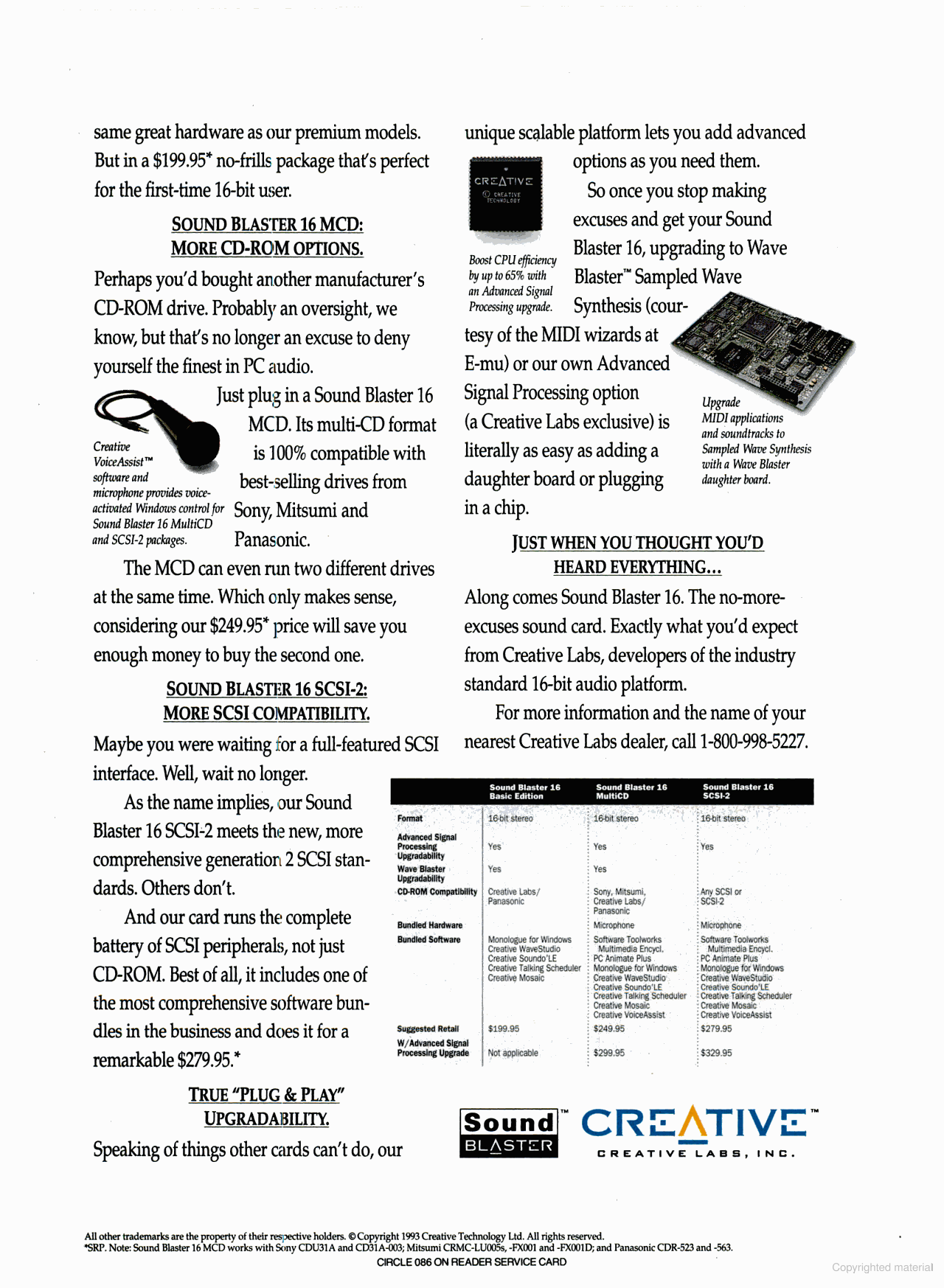
A Sound Blaster 16 advert from 1993


A later advert showcasing the Value Editions of SB, SBPro and SB16, plus SB16 MultiCD and SCSI-2, and the AWE32 (October 1994)

The same advert over 2 pages (March 1995)
Setting it Up
For the SCSI interface you need to install an ASPI driver for this chipset in your CONFIG.SYS file followed by the usual MSCDEX in your AUTOEXEC.BAT. The CT1770 and CT1779 came bundled with an Adaptec EZ-SCSI install disk, though you can also grab the drivers from a Windows 9x startup floppy disk. The files you need are ASPI2DOS.SYS and ASPICD.SYS. Click here for a text file with example startup file entries.
Downloads
Operation Manual Get in touch if you can provide this missing item! |
DOS and Windows 3.1 Utility Disks The original Sound Blaster 16 DOS and Windows 3.1 installation disks, marked Sound Blaster 16 |
. DOS and Windows 3.1 Utility Disks The original Sound Blaster 16/AWE DOS and Windows 3.1 installation disks, marked SDR-31STD-1-US (Revision 1). |
More Pictures
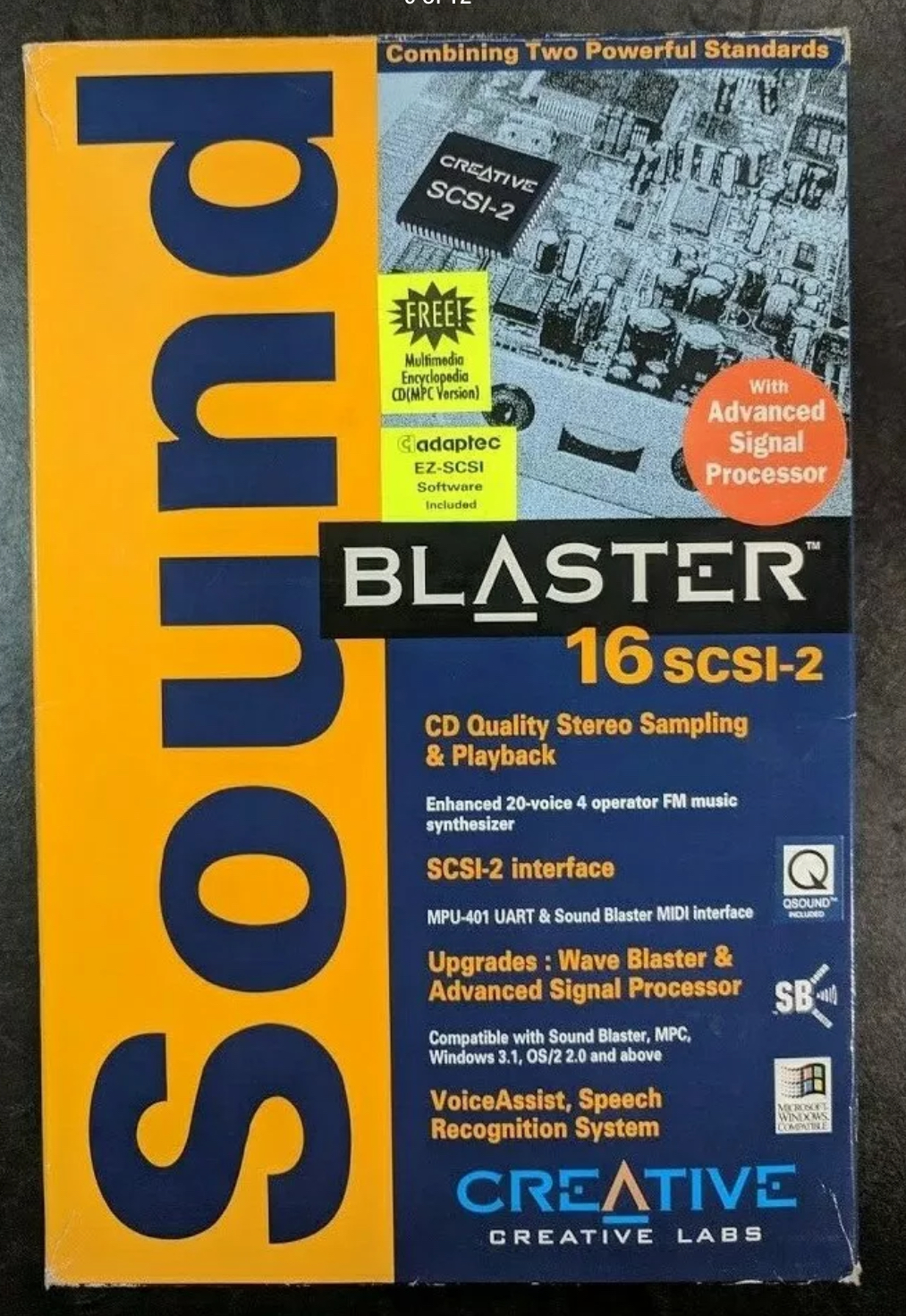
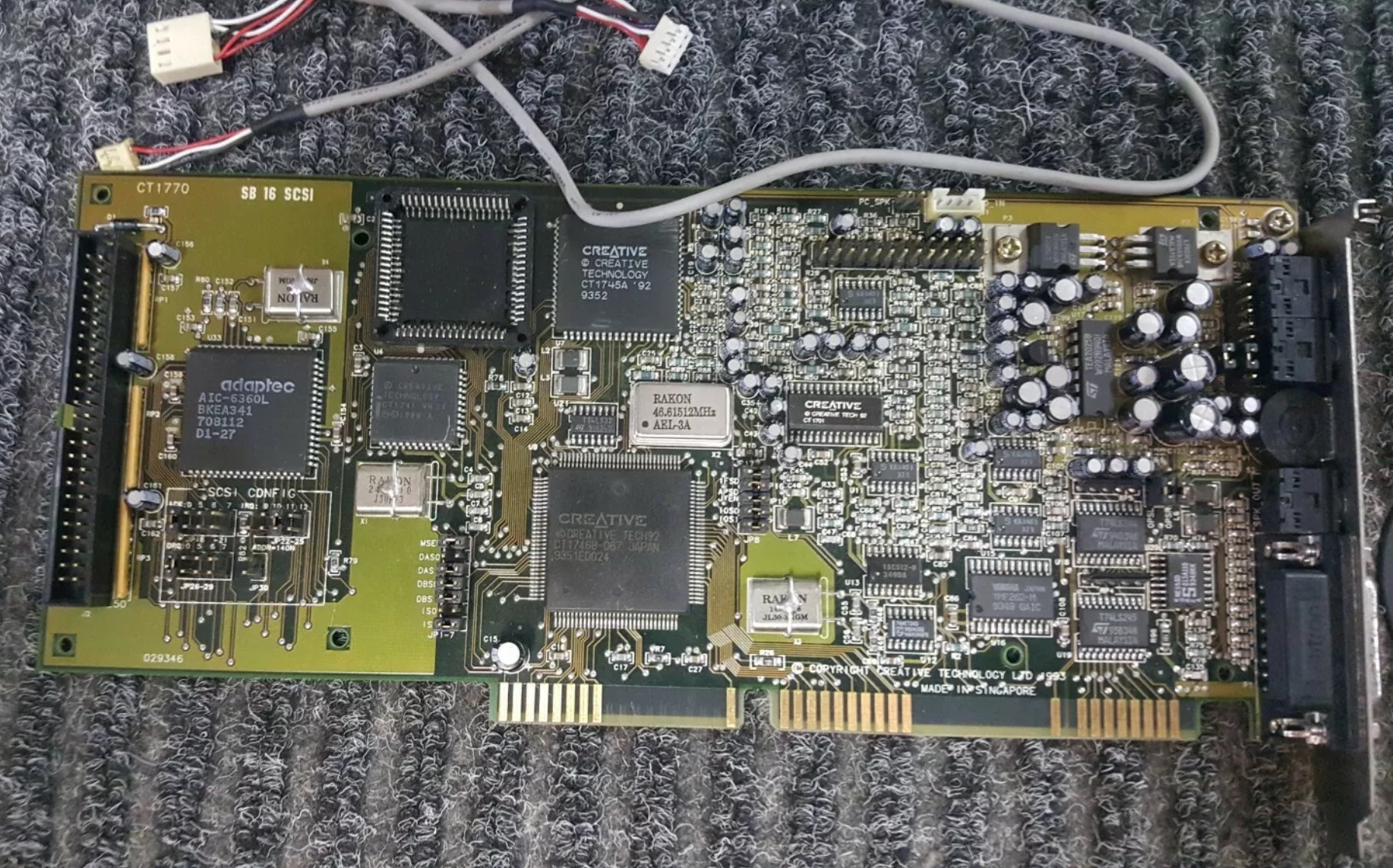
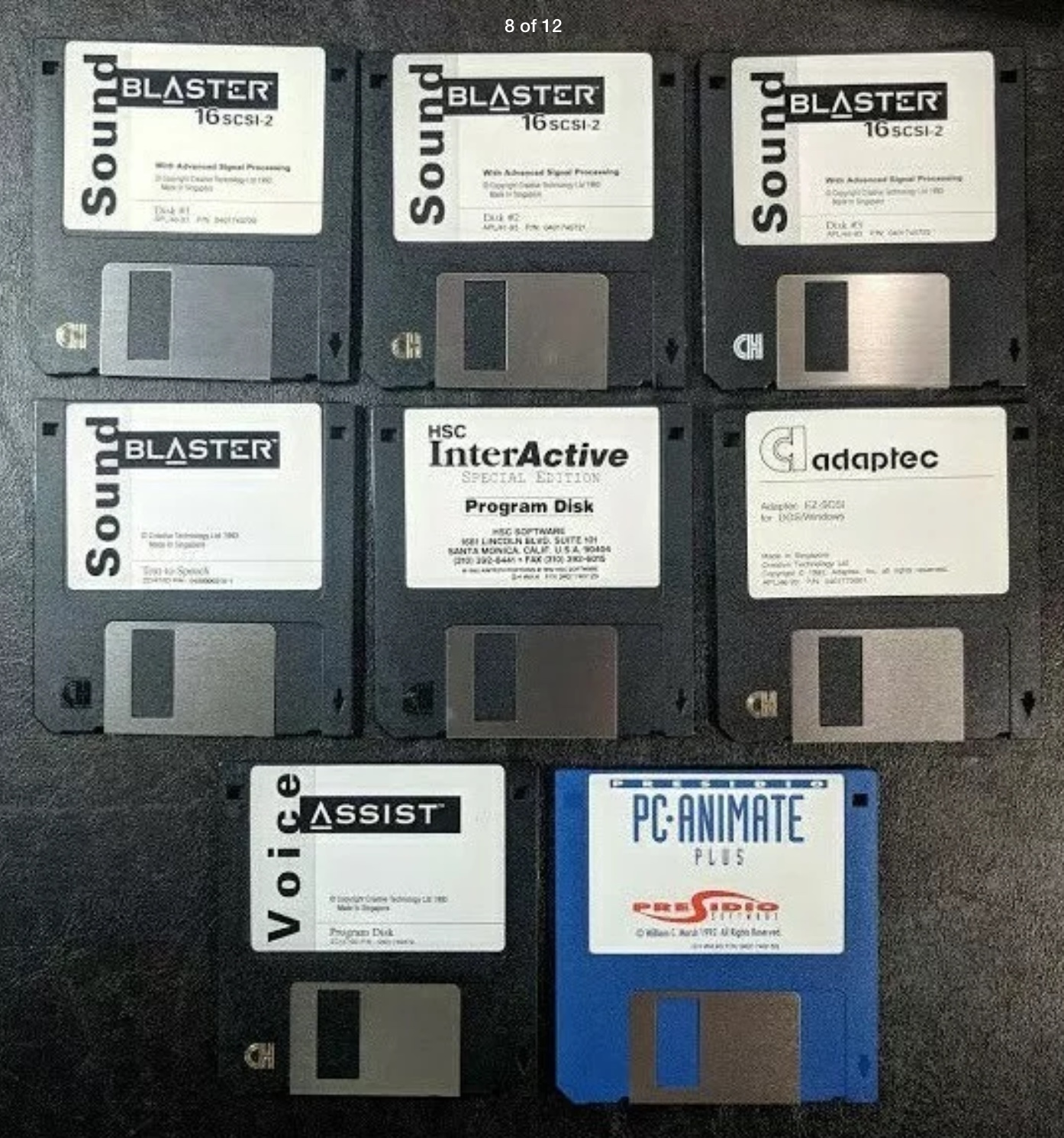


Sound Blaster 16 (CT1770, board revision 39352)
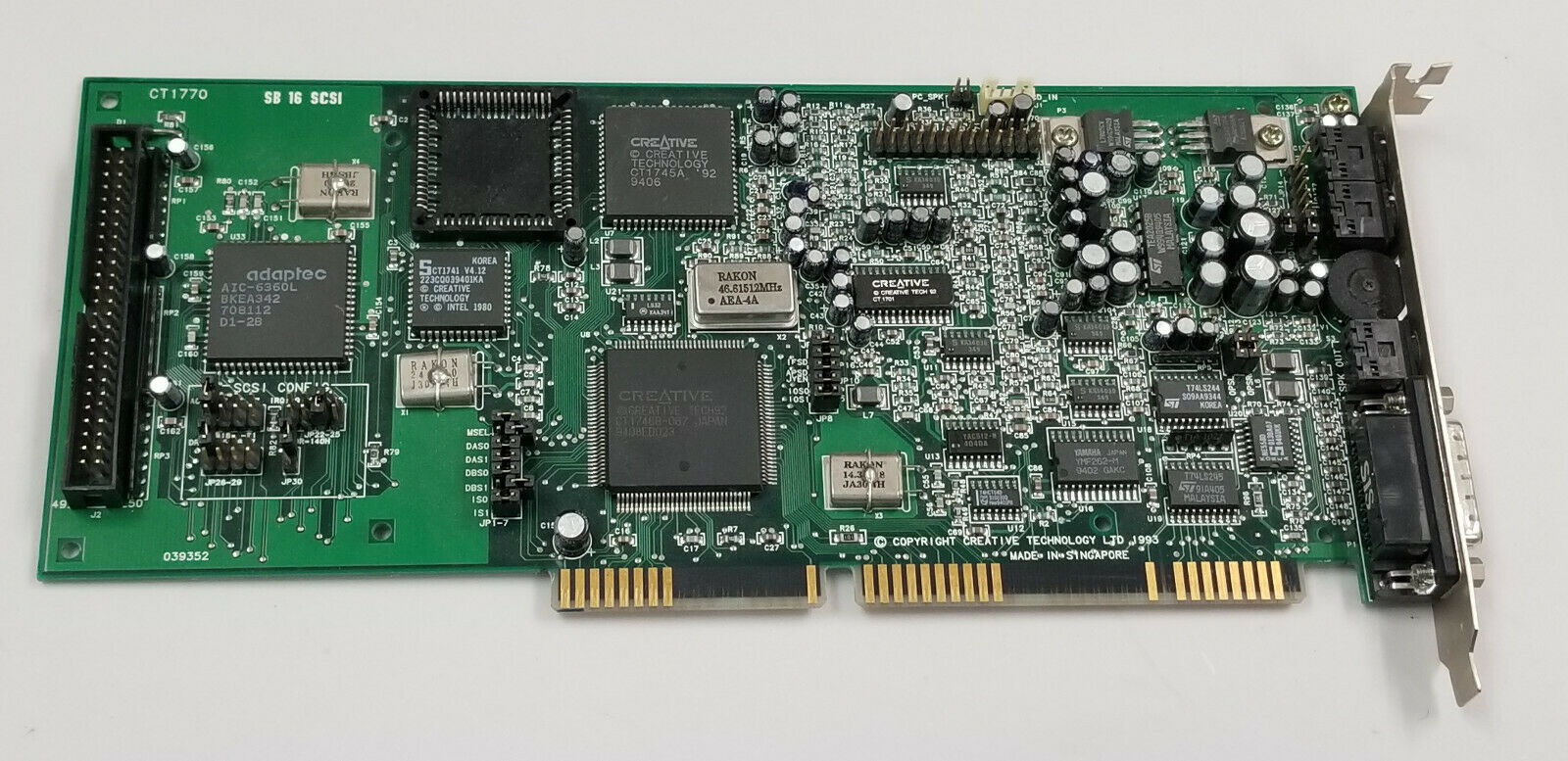
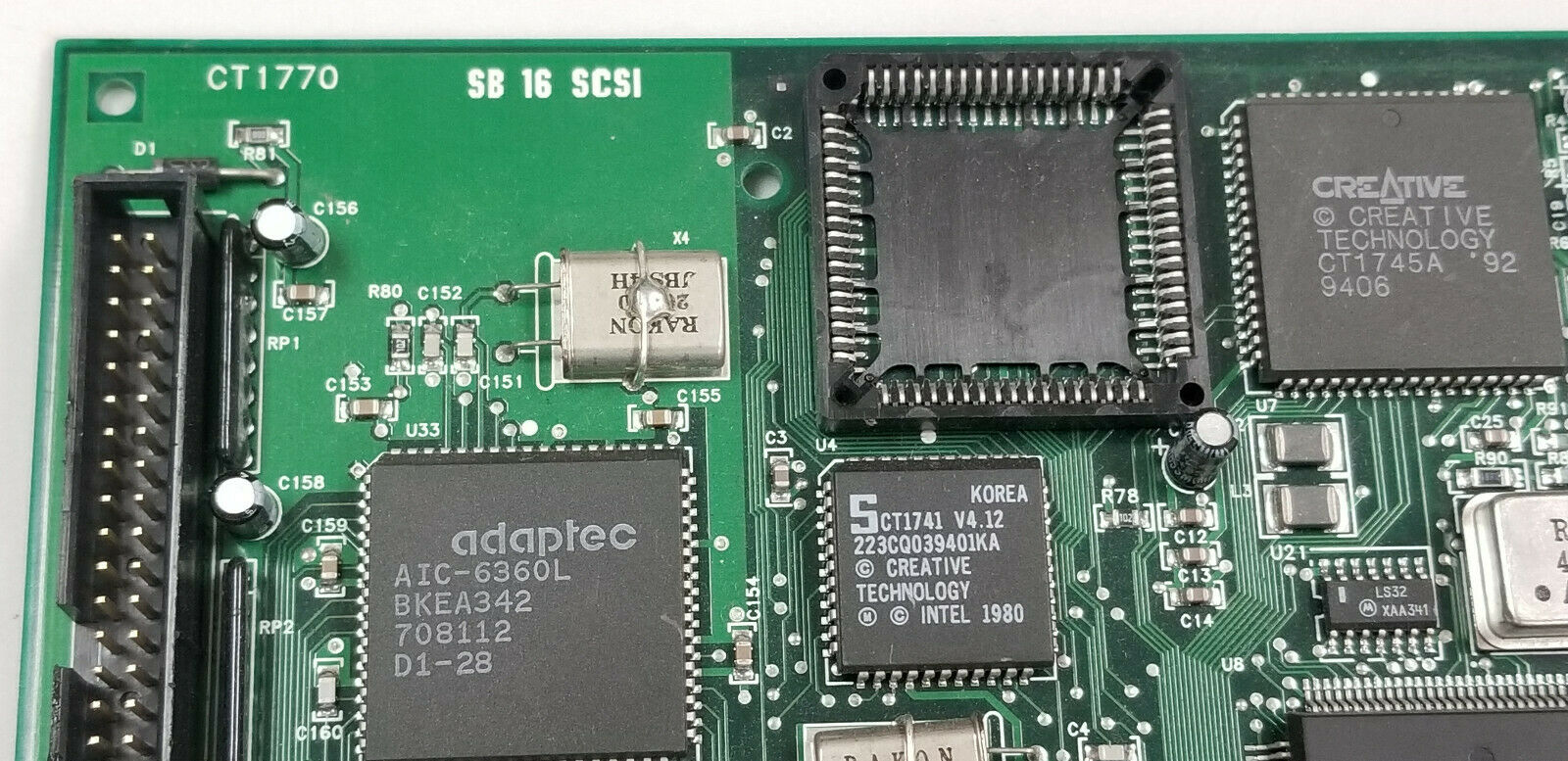
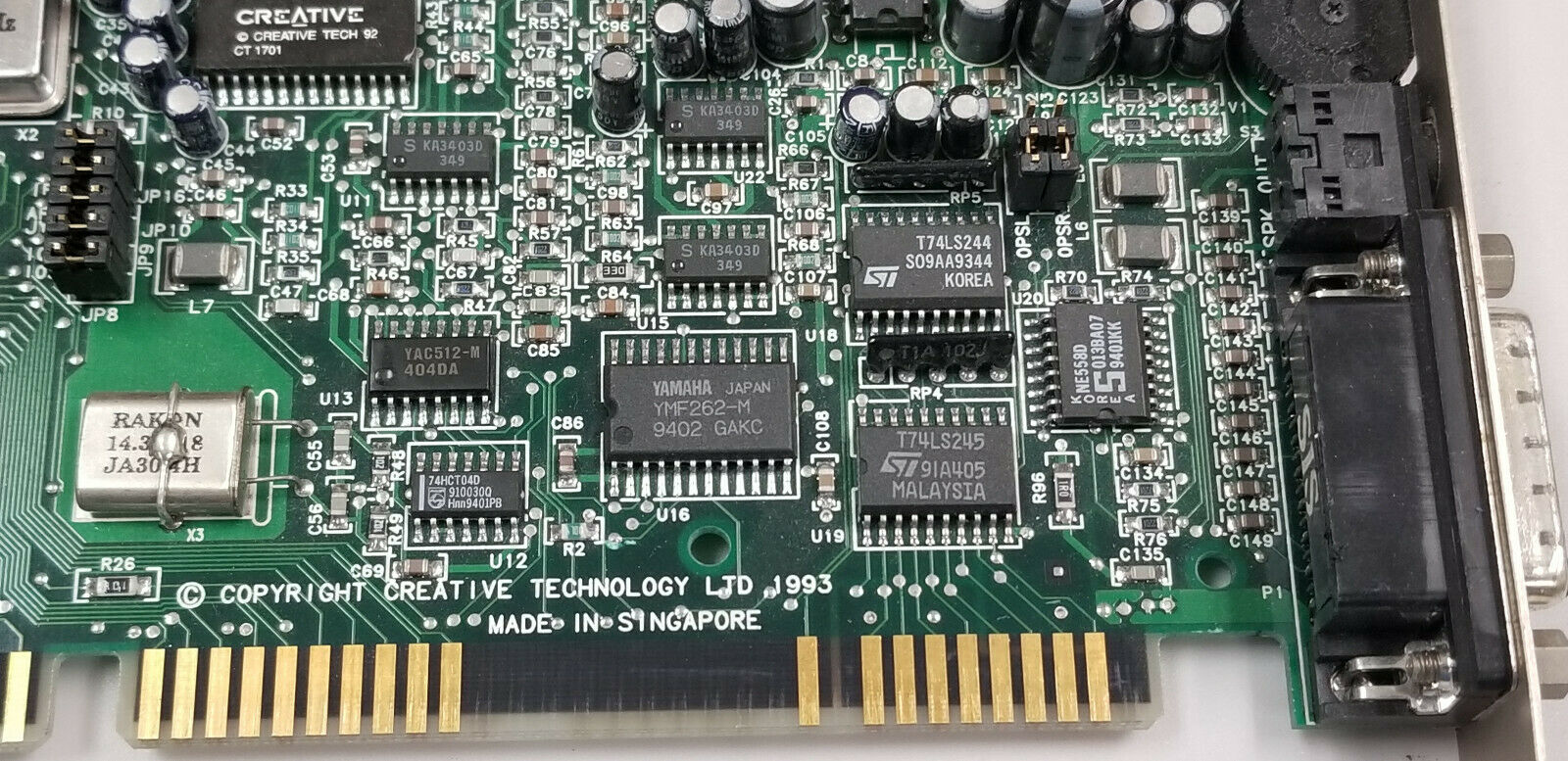
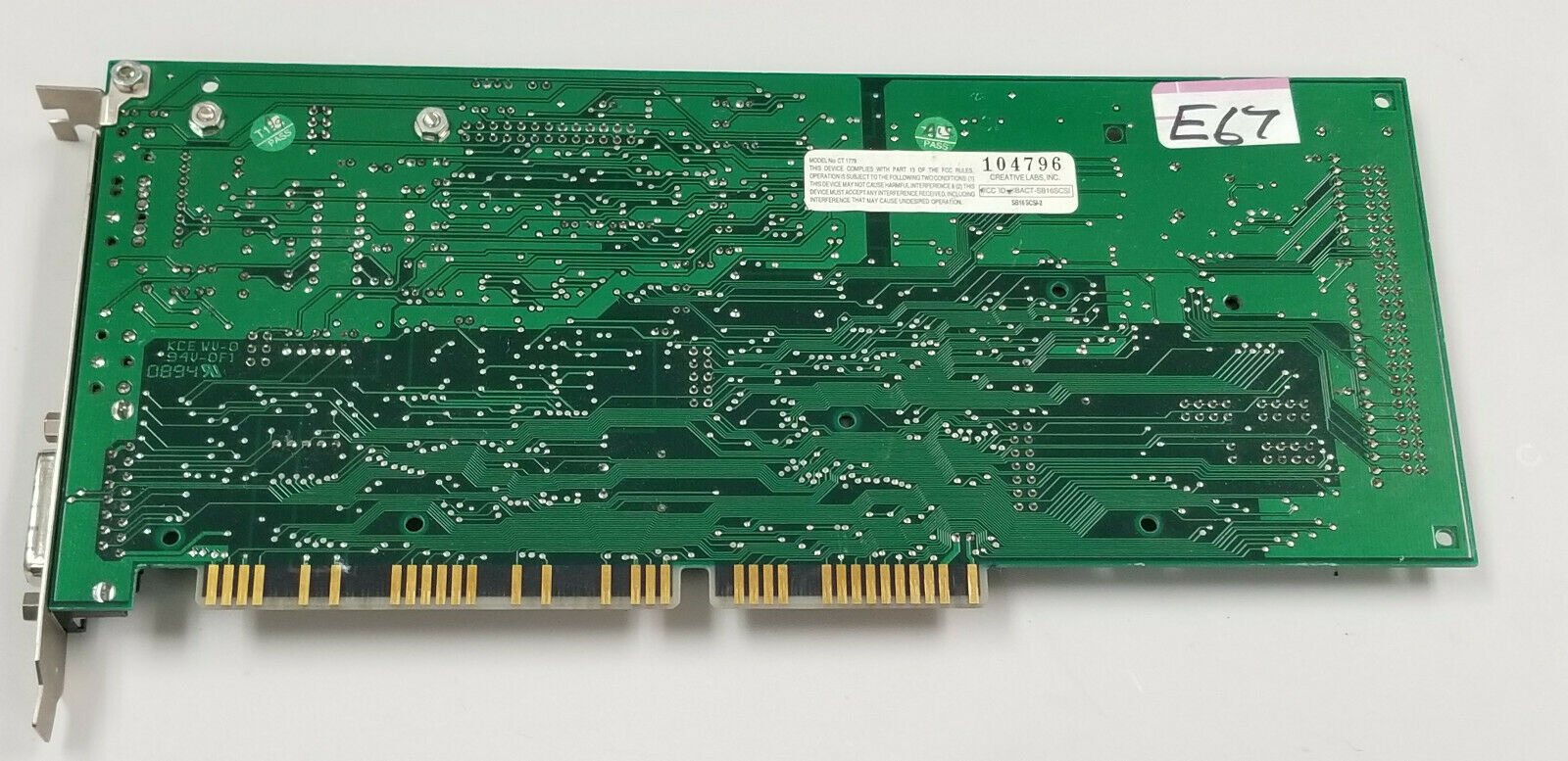

Another Sound
Blaster 16 (CT1770, rev. 39352)
